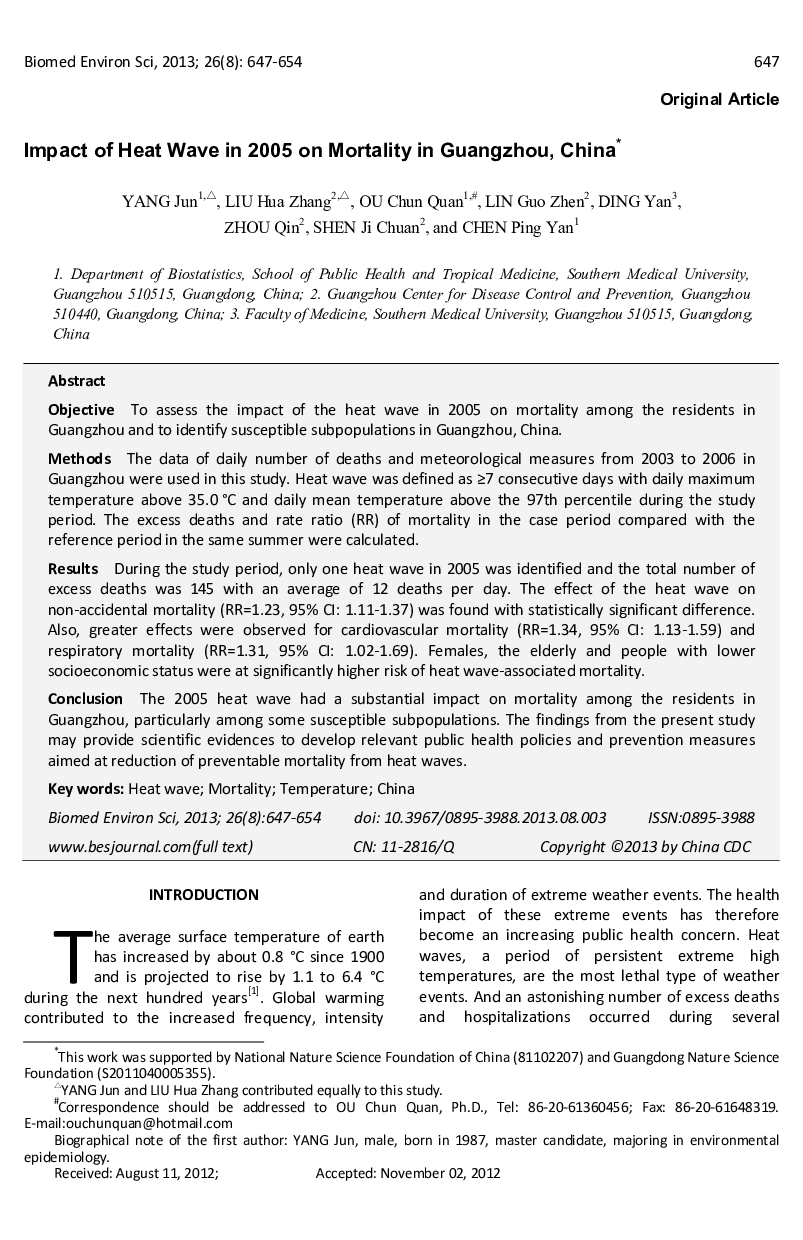| Article ID | Journal | Published Year | Pages | File Type |
|---|---|---|---|---|
| 4196353 | Biomedical and Environmental Sciences | 2013 | 8 Pages |
ObjectiveTo assess the impact of the heat wave in 2005 on mortality among the residents in Guangzhou and to identify susceptible subpopulations in Guangzhou, China.MethodsThe data of daily number of deaths and meteorological measures from 2003 to 2006 in Guangzhou were used in this study. Heat wave was defined as ≥7 consecutive days with daily maximum temperature above 35.0 °C and daily mean temperature above the 97th percentile during the study period. The excess deaths and rate ratio (RR) of mortality in the case period compared with the reference period in the same summer were calculated.ResultsDuring the study period, only one heat wave in 2005 was identified and the total number of excess deaths was 145 with an average of 12 deaths per day. The effect of the heat wave on non-accidental mortality (RR=1.23, 95% CI: 1.11-1.37) was found with statistically significant difference. Also, greater effects were observed for cardiovascular mortality (RR=1.34, 95% CI: 1.13-1.59) and respiratory mortality (RR=1.31, 95% CI: 1.02-1.69). Females, the elderly and people with lower socioeconomic status were at significantly higher risk of heat wave-associated mortality.ConclusionThe 2005 heat wave had a substantial impact on mortality among the residents in Guangzhou, particularly among some susceptible subpopulations. The findings from the present study may provide scientific evidences to develop relevant public health policies and prevention measures aimed at reduction of preventable mortality from heat waves.
